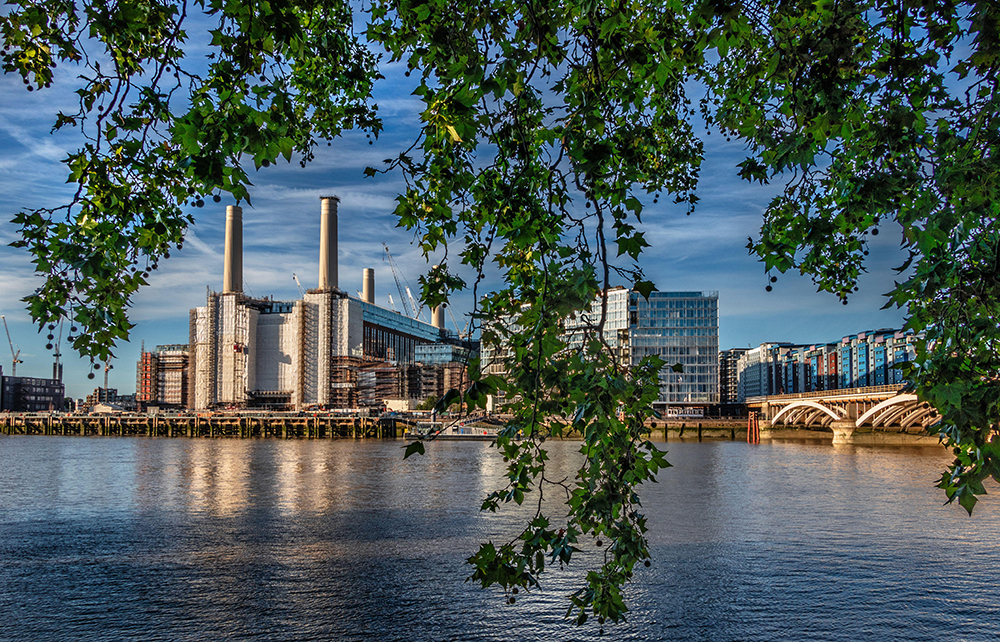Even if notions of beauty are treacherously fugitive, and even if interpretations of history are nowadays subject to revision by class, gender and race, there can be no civilised argument against the preservation and enjoyment of great architecture and art from the past. But ‘heritage’ is not quite that simple. There’s something else going on. A la recherche of what precisely?
Our troubled world accommodates, even embraces, heritage tomatoes and heritage paint. The former reaches back into agricultural history to find an uncontaminated source of perfect taste; the latter, chalk-dense, impure colours popularised by Farrow & Ball, elevates ordinary cottage woodwork to gentility. And these two poles of misplaced desire define the heritage sensibility.
It’s a malaise which uneasily mingles nostalgia with a distrust, verging on dislike creeping into phobia, of the new. When the future seems uncertain or even threatening, how nice to sit down to a feast of Cherokee Purple Heritage toms, in the light of a setting sun shining through window joinery painted Germolene or Mouse’s Back. This while dwelling on a Betjeman poem about cricket.
The heritage argument seems to
come down to: ‘It’s heritage if I like it and not heritage if I don’t’
James Stourton is heritage’s articulate high priest. And it is tempting to see in his psychology a yearning for places ‘sanctified by memory and association’. His family, he tells us, has been in decline since the Reformation – but not so far down the tubes to prevent him becoming a popular chairman of Sotheby’s and the author of a magisterial biography of the art historian Kenneth Clark.
Still, we can sympathise with him that his Georgian family home in Yorkshire was demolished and replaced by a Victorian horror (which now accommodates a caravan park). And soon after his grandmother sold her property to the University of York, they knocked it down. I think it’s true that at some level enthusiasts for heritage are nagged by a sense of loss. Regret rather than hope is their dominant emotion.
John Ruskin and William Morris are the guilty men responsible for this sensibility. The former was afraid of engines because their reciprocating motion reminded him of sex. The latter was blithely unconcerned that his socialist utopia of enlightened craftsmen manufactured merchandise that only the rich could afford. This was the beginning of the national anti-industrial sentiment we are only now, possibly too late, beginning to rue.
Heritage, as understood here, began as a Victorian response to the aggressive changes to town and country caused by industrialisation. The majority of British traditions, ‘heritage’ being one, date from the 19th century. Welsh national costume, for example, was an invention of Lady Llanover. Stourton attributes this fine observation to the historian David Cannadine, although the source is actually C.P. Snow’s The Masters, a heritage novel of 1951, a curious error.
This long book has two characters. The first comprises case studies where the abstract idea of heritage blurs with the practical matter of conserving uncorrupted landscape and fine old buildings. In 1864, Wimbledon Common was happily saved from Lord Spencer’s threat to enclose it. Euston Arch was unhappily demolished in 1962, thus a conservationist failure, but became a useful polemical tool for the movement. The second and less attractive character is one of subtle complaint. Motorways are ‘destructive’ and so too are airports. The proles, one gathers, really should not be allowed to move about. (Confession: I skipped the chapter on canals.)
Roy Strong’s Destruction of the Country House exhibition at the V&A in 1974 and the sale and dispersal of Mentmore in 1985, over many loud objections, were totemic events in the recent history of heritage awareness. Of course, survival bias plays a part in any evaluation of the past. Only the best and approved aspects remain, accepting that much of value has been wantonly destroyed. However, even the most spittle-flecked heritage maniacs are not keen to revive the Black Death, the stews of Shoreditch, the gallows at Tyburn, child poverty, rickets, outside loos, gasoliers and a life expectancy of 32.
Heritage sensibility presumes a Golden Age, a remedy to the disappointments of the present: it is perpetually seeking lost orientations. But while the rebuilding of urban Britain after 1945 has few aesthetic champions, it’s worth saying that the client was not a pope commissioning a Renaissance ideal city; the client was a desperate and demoralised people with nowhere to live, and the planners and architects had bombsites and meagre budgets to work with. Meanwhile, let’s remember that Georgian architecture was once reviled as sterile and repetitive.
Stourton’s complaint is less pleasing than his historical account. His mentor at Cambridge was the late David Watkin, an acidulous, misogynist snob who turned architectural history into a reactionary bludgeon. A little of this survives in Stourton’s concluding whiff of disapproval about Battersea Power Station.
For so long a decaying wreck whose legally mandated preservation stymied all possibilities of improvement in this once forlorn area, it has now been saved by what Andrew Saint, London’s official architectural historian, quoted here, called ‘big business at its most rapacious’. This rape involves surrounding Giles Gilbert Scott’s now refreshed old brick colossus with bright new designs by Norman Foster and Frank Gehry. Consequently, this part of the south bank littoral is now dynamic, interesting and prosperous. ‘Heritage’ interests played no part in achieving this.
Stourton writes with elegance and a gentle, if patrician, wit. I was instructed and amused by this intelligent and well-researched book, but not persuaded. The heritage arguments are both arbitrary and dogmatic. It seems to come down to: ‘It’s heritage if I like it and not heritage if I don’t.’
Put it this way: had a concept of heritage been available at the time, it would have resisted Henry VIII’s creation of the Palace of Whitehall.






Comments